Vienna - Monday April 8, 2019
I began Monday with a visit to the Hoffburg palace in Vienna. When the Habsburg rulers were in town, this is where they lived (versus the Schönbrunn Palace outside of town, which I didn't get around to visiting). The Hoffburg is a complex mishmash of building projects, from the 1200s up to 1916, when building was halted.
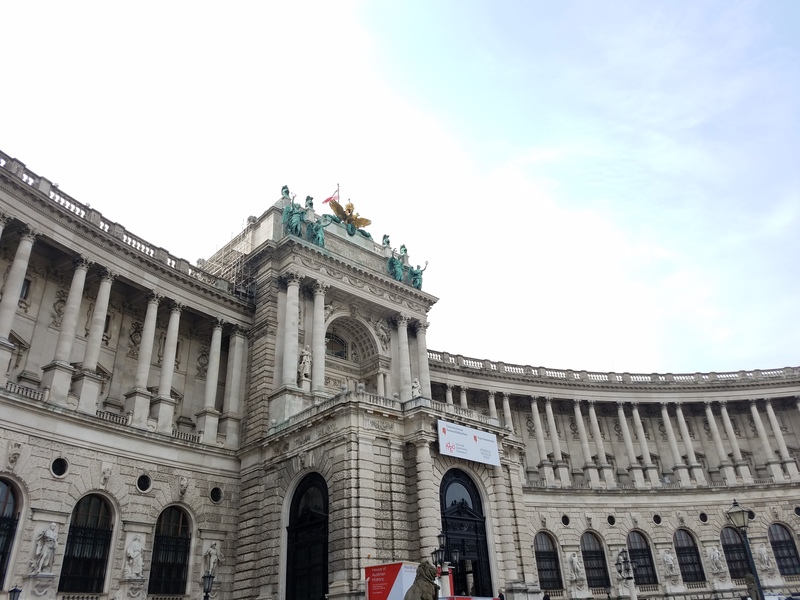
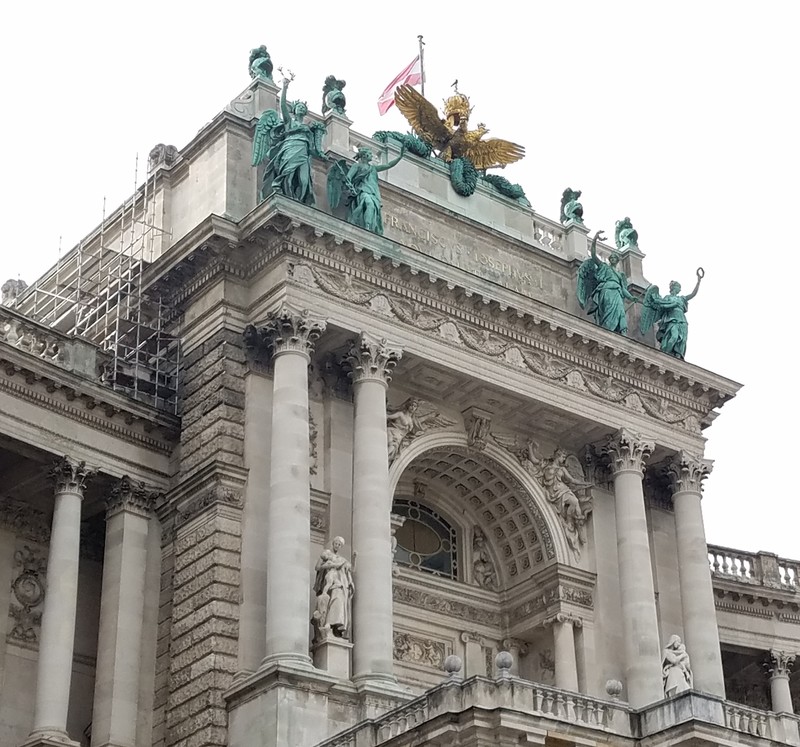
The 1916 facade. The Habsburgs were bolstering their empire with symbols of power and legitimacy.
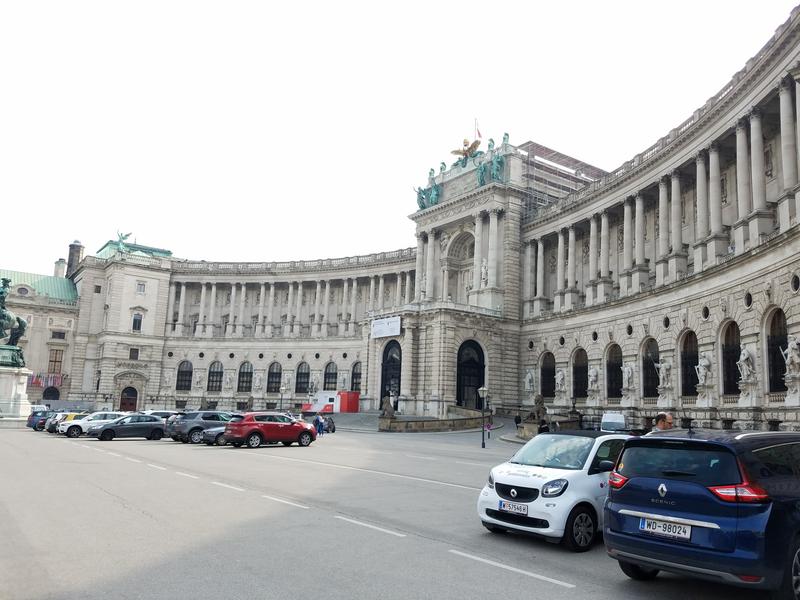
The Habsburg imperial parking lot.
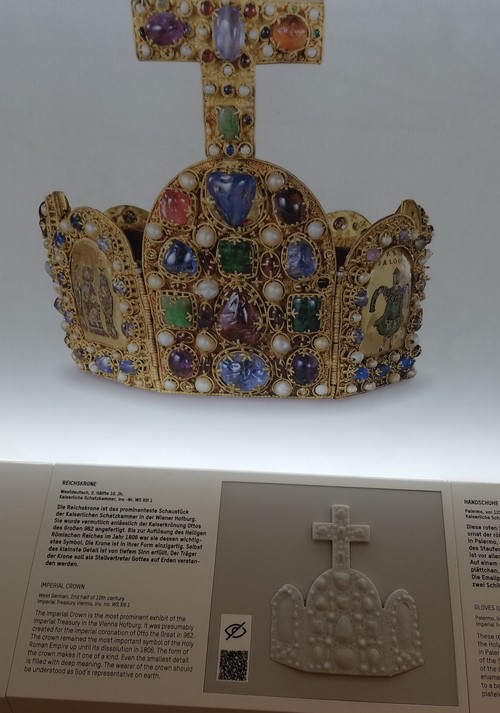
The museum shop includes a time line, with photos and relief versions of each photo for the sight impaired. It begins with Otto the Great, the first Viennese emperor of the revived Holy Roman Empire, in 962. The wearer of the crown was said to be God's representative on Earth. In 1428, the Habsburgs took over. After 1806, when the Holy Roman Empire was dissolved, it became the Austrian Empire. The Habsburgs didn't want to give up the title of emperor.
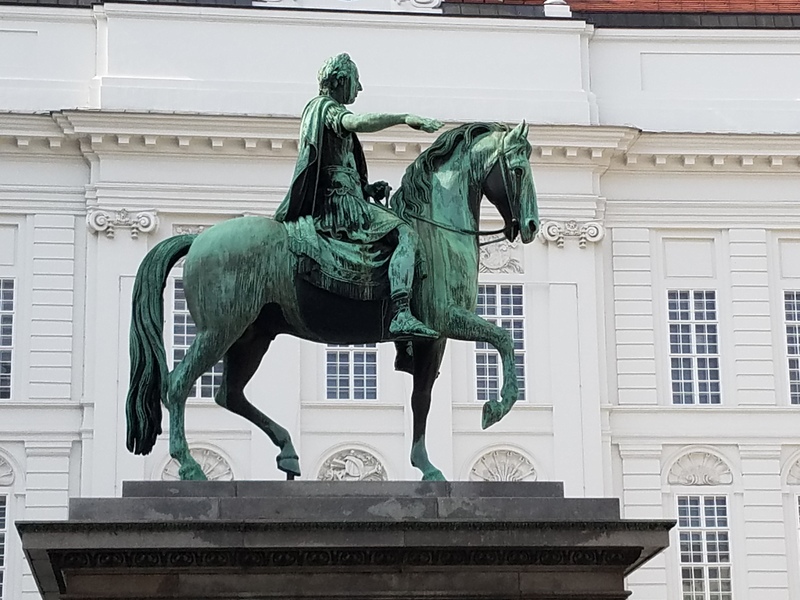
They emphasized their connection to historic Rome. Eventually, the only connection between the Habsburgs and Rome seemed to be that, occasionally, a Habsburg is killed by "an Italian anarchist." Actual Holy Roman emperors didn't dress like extras in a sword-and-sandal movie.
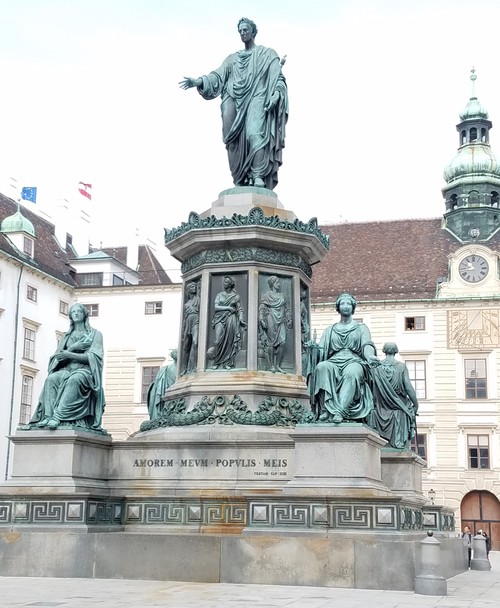
A fancier example of pseudo-Roman royalty. This is Franz Josef, one of the last and the longest-ruling of the Habsburgs. Surrounding this square were imperial apartments, including those of Emperor Franz Josef and his wife, Empress Elizabeth.
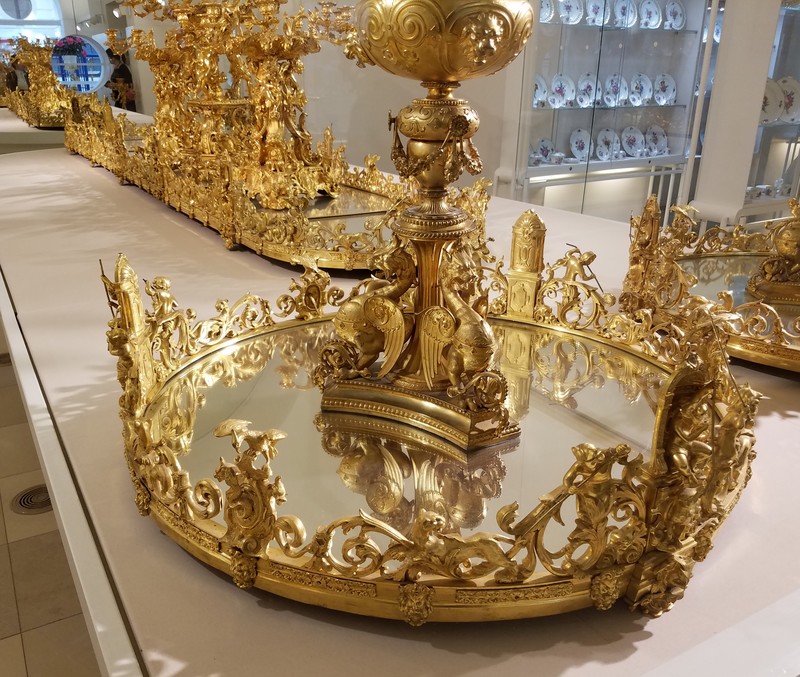
I toured the imperial apartments of Emperor Franz Josef and Empress Elizabeth. Empress Elizabeth was a somewhat tragic figure who spent her later years in a near-constant state of mourning (the exhibit included an impressively gothy dress with layers of black lace). She didn't want to be empress, but Franz Josef fell head-over-heels for her. According to the story, this ocurred at a social occasion where his family was trying to set him up with someone else. She was the subject of multiple films which, we were assured, are not very good. Few photos were allowed. This is a fancy centerpiece for a fancy dining table.
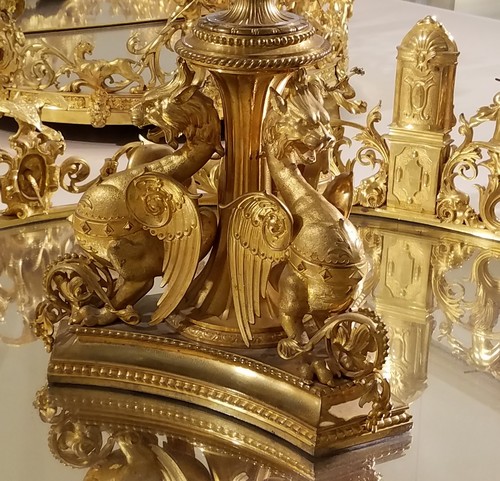
Centerpiece detail. There be dragons.

Later in the day I joined a walking tour, which also visited the Hoffburg palace complex. This is the imperial chapel.
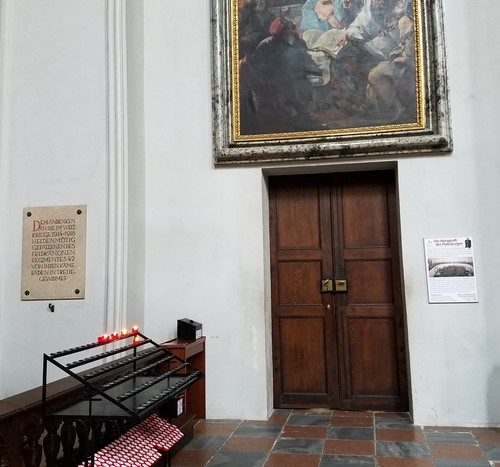
Behind this door are the hearts of the Hapburg royalty, each in an individual royal container.
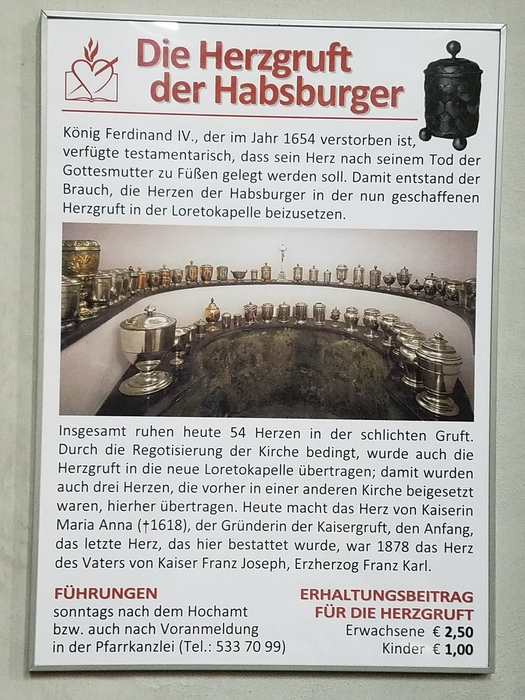
I left my heart in Vienna. The guide said the rest of their entrails were kept in a crypt below St Stephans. Imperial symbolism meets the Catholic tradition of relics.
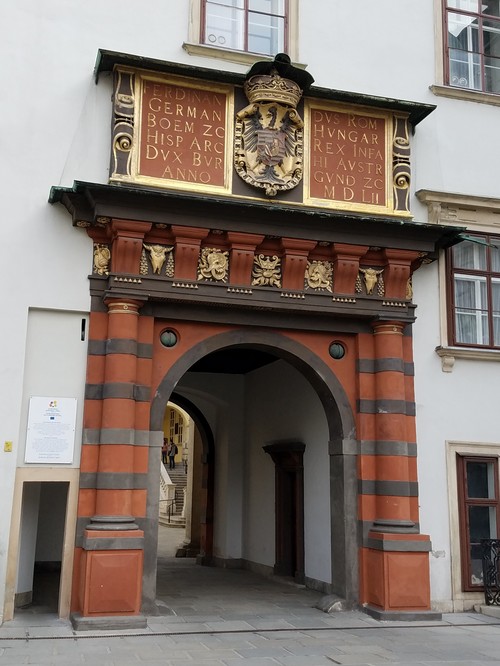
A gateway leading to the oldest part of the palace. The date at the end of the text is MDLII = 1552.
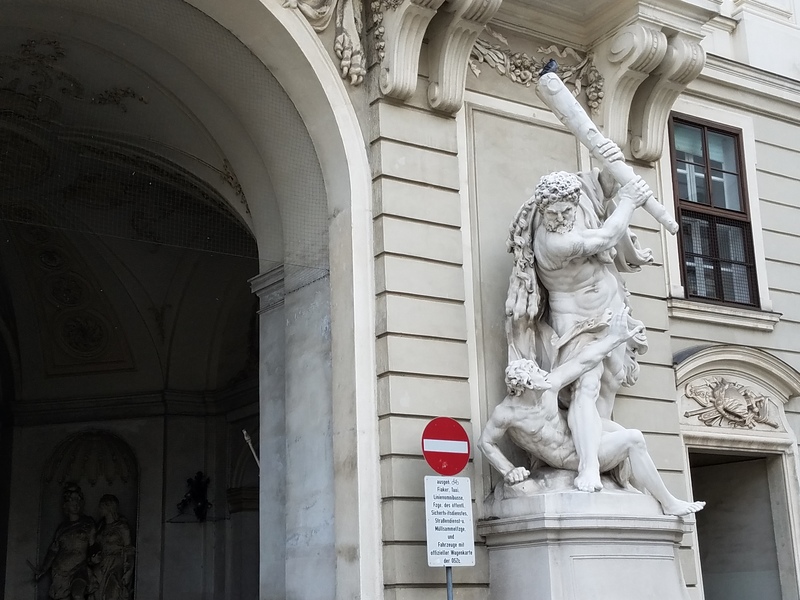
It's the strong bearded guy again, near one of the palace gateways. He appears to be beating up a peasant.
Back to
Jonathan's Page
Vienna 08 April 2019 / Jonathan Krall / revised July 2019












